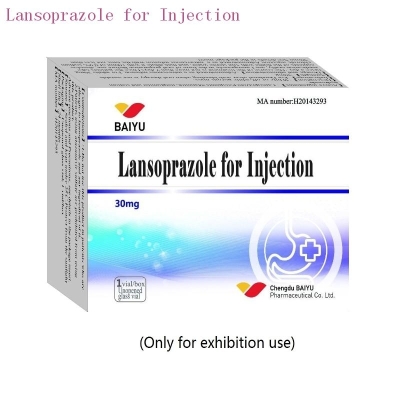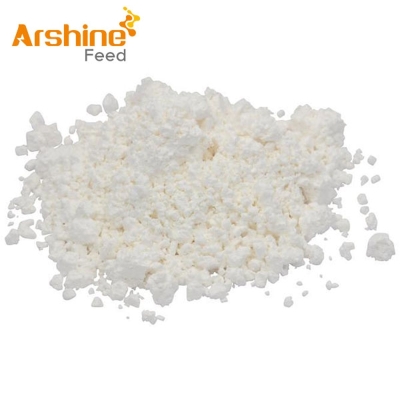-
Categories
-
Pharmaceutical Intermediates
-
Active Pharmaceutical Ingredients
-
Food Additives
- Industrial Coatings
- Agrochemicals
- Dyes and Pigments
- Surfactant
- Flavors and Fragrances
- Chemical Reagents
- Catalyst and Auxiliary
- Natural Products
- Inorganic Chemistry
-
Organic Chemistry
-
Biochemical Engineering
- Analytical Chemistry
- Cosmetic Ingredient
-
Pharmaceutical Intermediates
Promotion
ECHEMI Mall
Wholesale
Weekly Price
Exhibition
News
-
Trade Service
The risk of cirrhosis in young children is gradually increasing.
According to reports, the number of cases of liver cirrhosis in children and adolescents worldwide has increased from 724,200 in 1990 to 917,800 in 2017, an increase of 0.
13% per year during this period.
Children with cirrhosis have an increased risk of death, especially for young children, where cirrhosis is usually fatal.
However, the current research on cirrhosis in young children is still very limited.
Recently, scholars from the Fifth Medical Center of the Chinese People's Liberation Army General Hospital and other places conducted a cohort study to explore the causes and prognosis of liver cirrhosis in infants, toddlers and preschool children confirmed by biopsy.
Research Introduction The investigators began recruiting infants with liver cirrhosis confirmed by biopsy in January 2010, and excluded patients with hepatocellular carcinoma (HCC) or liver transplantation at the time of enrollment.
As of January 2020, this research has been conducted for 10 years.
The results of the study included 139 children with liver cirrhosis, of which 87 were boys and 52 were girls.
The median age at the first histological diagnosis of cirrhosis was 2 years (1 month to 6 years).
The first symptom reported by 62 patients was yellowish sclera and/or skin.
Ninety-three patients had a clear cause, and 46 patients had an unknown cause.
1.
The cause of liver cirrhosis in young children Among the cases with a clear cause, 31 cases had hepatitis B virus (HBV) infection (accounting for 33.
3%), 16 cases were diagnosed with glycogen storage disease, and 14 cases had Hepatolenticular degeneration (Wilson disease), 13 cases have biliary atresia, 6 cases have progressive familial intrahepatic cholestasis, 5 cases have autoimmune hepatitis, 2 cases have Niemann Pick’s disease, 2 cases Suffered from transient infantile hypertriglyceridemia, 1 case had choledochal cyst, 1 case had Citrin deficiency, 1 case had hyperhomocysteinemia, and 1 case had liver cirrhosis related to drug toxicity.
2.
The prognosis of infant cirrhosis.
The median follow-up time of the included cases was 65 months.
During the follow-up period, except for 4 patients who underwent liver transplantation (1 case of biliary atresia, 1 case of progressive familial intrahepatic cholestasis, and 2 cases of unknown etiology), 25 of the remaining 135 cases (18.
5%) death.
Among the deaths, 13 were of unclear etiology, 7 were patients with biliary atresia, 2 were patients with hepatolenticular degeneration, 1 was with autoimmune hepatitis, 1 was with glycogen storage disease, and 1 was with biliary atresia.
HBV infection.
All patients with HBV infection received antiviral treatment.
During the follow-up period, 9 patients with HBV infection received effective antiviral treatment, and finally achieved the disappearance of hepatitis B surface antigen (HBsAg) (29.
0%).
One patient underwent a second liver biopsy, and the results showed significant improvement in histology.
.
Logistic regression showed that baseline alanine aminotransferase (ALT) was an independent predictor of HBsAg disappearance (odds ratio 1.
008, p=0.
028).
Discussion The progression of cirrhosis is complicated, but sometimes it can be prevented.
Research on the etiology of liver cirrhosis can help delay or block the progression of fibrosis to cirrhosis.
This study shows that HBV infection is an important cause of cirrhosis in young children, which may be related to the prevalence of HBV in my country.
After effective antiviral treatment, several patients have a good clinical prognosis.
ALT is a predictor of response to antiviral therapy.
Cirrhosis caused by HBV is not common in infants.
Therefore, the pathogenesis of HBV-related cirrhosis in infants deserves further study.
It is very important to accurately identify the cause, because some causes can be effectively treated.
For patients with unknown etiology, it is necessary to carry out long-term close follow-up to assess the diagnosis and deal with complications in a timely manner.
Regarding the prognosis of cirrhosis in young children, it is worth noting that more than half of patients with biliary atresia died during follow-up (7/13).
According to previous reports, biliary atresia is considered the primary indication for liver transplantation in children.
Therefore, as a serious disease of young children, more effective treatment methods should be developed for biliary atresia.
Literature index: Dong Y, Li A, Zhu S, Chen W, Li M, Zhao P.
Biopsy-proven liver cirrhosis in young children: A 10-year cohort study.
J Viral Hepat.
2021;00:1–5.
https ://doi.
org/10.
1111/jvh.
13501 Contribution email: tougao@medlive.
cn
According to reports, the number of cases of liver cirrhosis in children and adolescents worldwide has increased from 724,200 in 1990 to 917,800 in 2017, an increase of 0.
13% per year during this period.
Children with cirrhosis have an increased risk of death, especially for young children, where cirrhosis is usually fatal.
However, the current research on cirrhosis in young children is still very limited.
Recently, scholars from the Fifth Medical Center of the Chinese People's Liberation Army General Hospital and other places conducted a cohort study to explore the causes and prognosis of liver cirrhosis in infants, toddlers and preschool children confirmed by biopsy.
Research Introduction The investigators began recruiting infants with liver cirrhosis confirmed by biopsy in January 2010, and excluded patients with hepatocellular carcinoma (HCC) or liver transplantation at the time of enrollment.
As of January 2020, this research has been conducted for 10 years.
The results of the study included 139 children with liver cirrhosis, of which 87 were boys and 52 were girls.
The median age at the first histological diagnosis of cirrhosis was 2 years (1 month to 6 years).
The first symptom reported by 62 patients was yellowish sclera and/or skin.
Ninety-three patients had a clear cause, and 46 patients had an unknown cause.
1.
The cause of liver cirrhosis in young children Among the cases with a clear cause, 31 cases had hepatitis B virus (HBV) infection (accounting for 33.
3%), 16 cases were diagnosed with glycogen storage disease, and 14 cases had Hepatolenticular degeneration (Wilson disease), 13 cases have biliary atresia, 6 cases have progressive familial intrahepatic cholestasis, 5 cases have autoimmune hepatitis, 2 cases have Niemann Pick’s disease, 2 cases Suffered from transient infantile hypertriglyceridemia, 1 case had choledochal cyst, 1 case had Citrin deficiency, 1 case had hyperhomocysteinemia, and 1 case had liver cirrhosis related to drug toxicity.
2.
The prognosis of infant cirrhosis.
The median follow-up time of the included cases was 65 months.
During the follow-up period, except for 4 patients who underwent liver transplantation (1 case of biliary atresia, 1 case of progressive familial intrahepatic cholestasis, and 2 cases of unknown etiology), 25 of the remaining 135 cases (18.
5%) death.
Among the deaths, 13 were of unclear etiology, 7 were patients with biliary atresia, 2 were patients with hepatolenticular degeneration, 1 was with autoimmune hepatitis, 1 was with glycogen storage disease, and 1 was with biliary atresia.
HBV infection.
All patients with HBV infection received antiviral treatment.
During the follow-up period, 9 patients with HBV infection received effective antiviral treatment, and finally achieved the disappearance of hepatitis B surface antigen (HBsAg) (29.
0%).
One patient underwent a second liver biopsy, and the results showed significant improvement in histology.
.
Logistic regression showed that baseline alanine aminotransferase (ALT) was an independent predictor of HBsAg disappearance (odds ratio 1.
008, p=0.
028).
Discussion The progression of cirrhosis is complicated, but sometimes it can be prevented.
Research on the etiology of liver cirrhosis can help delay or block the progression of fibrosis to cirrhosis.
This study shows that HBV infection is an important cause of cirrhosis in young children, which may be related to the prevalence of HBV in my country.
After effective antiviral treatment, several patients have a good clinical prognosis.
ALT is a predictor of response to antiviral therapy.
Cirrhosis caused by HBV is not common in infants.
Therefore, the pathogenesis of HBV-related cirrhosis in infants deserves further study.
It is very important to accurately identify the cause, because some causes can be effectively treated.
For patients with unknown etiology, it is necessary to carry out long-term close follow-up to assess the diagnosis and deal with complications in a timely manner.
Regarding the prognosis of cirrhosis in young children, it is worth noting that more than half of patients with biliary atresia died during follow-up (7/13).
According to previous reports, biliary atresia is considered the primary indication for liver transplantation in children.
Therefore, as a serious disease of young children, more effective treatment methods should be developed for biliary atresia.
Literature index: Dong Y, Li A, Zhu S, Chen W, Li M, Zhao P.
Biopsy-proven liver cirrhosis in young children: A 10-year cohort study.
J Viral Hepat.
2021;00:1–5.
https ://doi.
org/10.
1111/jvh.
13501 Contribution email: tougao@medlive.
cn







